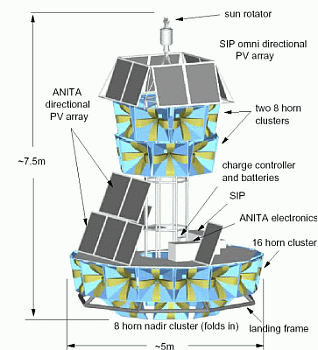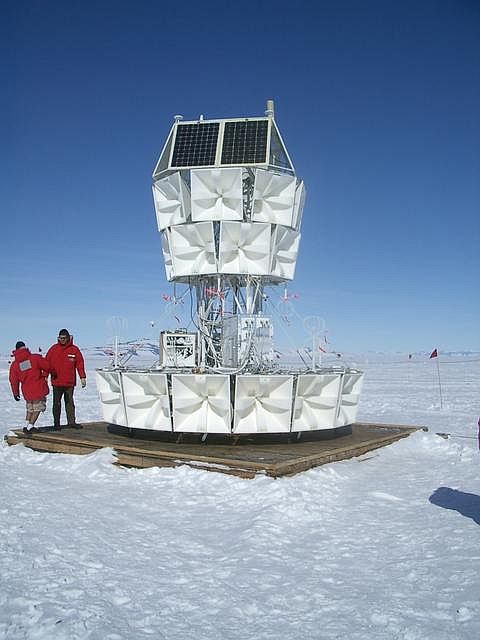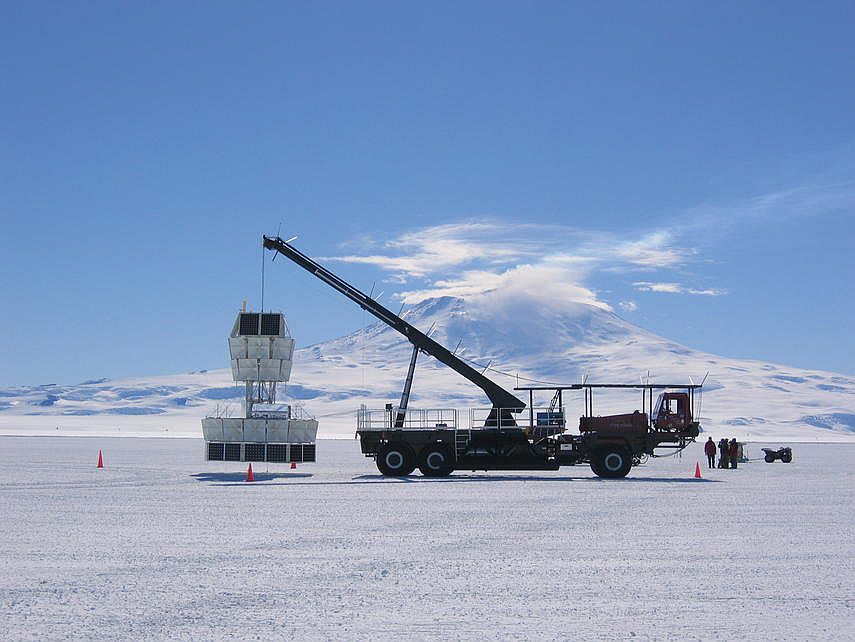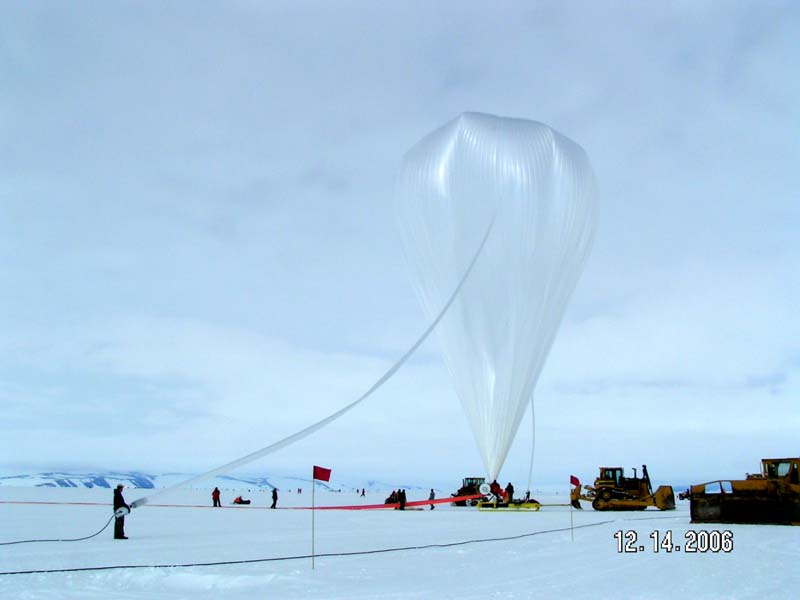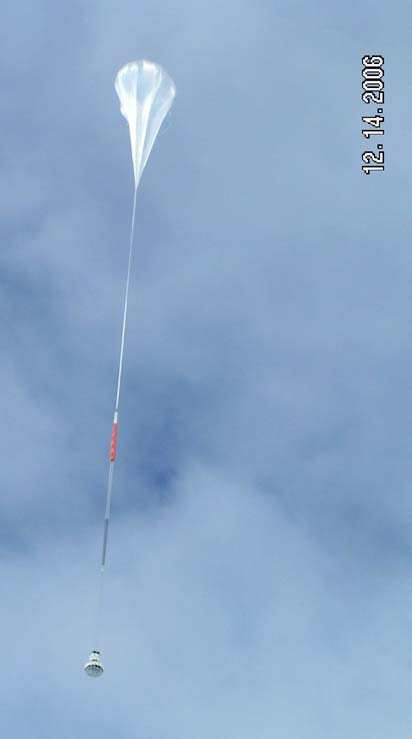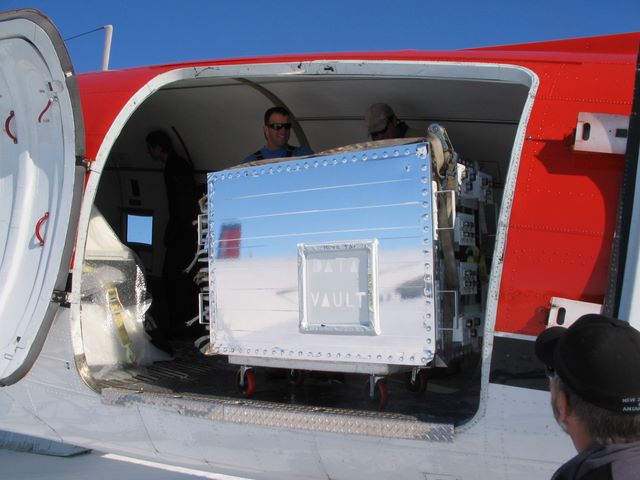Purpose of the flight and payload description
The ANITA instrument is a radio telescope to detect ultra-high energy cosmic-ray neutrinos from a scientific balloon flying over the continent of Antarctica. It will be the first NASA observatory for neutrinos of any kind.
Neutrinos are of great interest to astrophysicist as they are the only particle that can reach earth unattenuated at all energies. This is particularly of interest at high energies where other particles and photons will interact with the photons of the microwave background making them unable to propagate and survive over long astrophysical distances. In other words, if the scientists want to see the ultra-high energy universe, they should view it through the "light" of neutrinos.
The ANITA instrument detects these ultra-high energy neutrinos by use of the Askaryan effect. This effect predicts the production of a coherent radio emission from the cascade of particles produced in a high-energy particle interaction. In other words detecting a 'snap' in the radio frequencies caused by the interaction of the ultra-high energy neutrino.
In order to detect this radio emission (Askaryan pulses) it's needed a radio transparent medium for the interaction to occur in - and lots of it since these interactions are rare. Some materials that are radio transparent are salt, sand and ice. Also needs a fairly radio quiet area as the Askaryan pulses are very faint signals.
The ANITA instrument is being designed to fly over the continent of Antarctica - the location of some of the most pure ice in the world as well as one of the most radio quiet spots on earth. Flying at 120,000ft (~ 37 km) the instrument can observe ~1.5 million square kilometers of ice. However Neutrinos are so rare that with a detection area that large the scientists don't expect to see more than a hundred or so events.
Details of the balloon flight
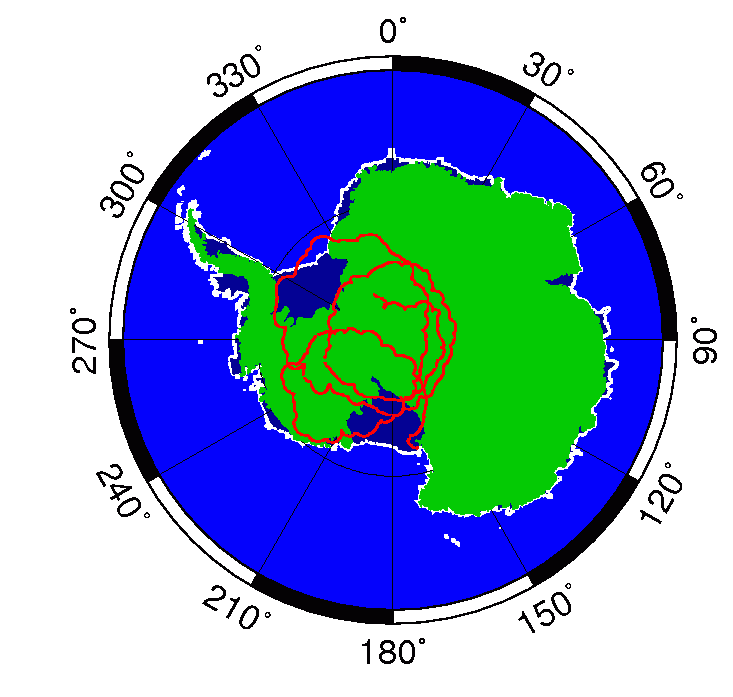
Balloon launched on: 12/14/2006 at 23:40 local
Launch site: Williams Field, McMurdo Station, Antarctica
Balloon launched by: Columbia Scientific Balloon Facility (CSBF)
Balloon manufacturer/size/composition: Zero Pressure Balloon Raven - 29.470.000 cuft - (0.8 Mil)
Balloon serial number: W 29.47-2X-18
Flight identification number: 562N
End of flight (L for landing time, W for last contact, otherwise termination time): 1/19/2007 at 1:32 utc
Balloon flight duration (F: time at float only, otherwise total flight time in d:days / h:hours or m:minutes - ): 35 d 1h 29 m
Landing site: At coordinates, 84º 33' S, 22º 07' W in the Antarctic Plateau
Payload weight: 1803 kgs
Overall weight: 2619 kgs
After several cancelled attempts during the previous days, the balloon was finally launched by dynamic method with assistance of launch vehicle (The Boss) on December 14th at 23:25 local time (December 15th - 0:25 according to utc TIME). Weather at the launch time was good. The launch run and pin release were smooth.
The initial ascent phase was carried out at 1000 feet/minute passing through the critical zone of the Tropopause one hour after released, and reached the float altitude near 123.000 ft three hours later. The balloon's path looked a little strange at first but then acquired a more nominal trajectory as expected. After a few hours the balloon mounted onto the Arctic vortex and started an anticlockwise route over the Antarctic Plateau.
After 35 days of flight, the mission was terminated on January 19th, 2007 a little after 1:30 utc. The termination command was transmited from a C-130 plane flying in the vicinity of the balloon. The payload landed at 2:09 utc at coordinates, 84º 33' S, 22º 07' W, 326 nautic miles northwest of the South Pole.
From an aerial inspection, once in the ground the payload tipped over one side. The member of the scientific team confirmed also the separation of the parachute from the payload. Recovery was carried out days later by a Twin Otter plane.
ANITA recorded approximately 8.2 M RF-triggered events during the 35 day flight, and for each of these events all of the antennas and different polarizations were read out and archived to disk. The system was able to maintain a trigger rate of between 4 and 5 Hz during normal operation without any significant loss, and this rate, which was determined by the individual antenna thresholds, met the pre-flight sensitivity goal for periods when the payload was not in view of strong anthropogenic noise sources. In practice, less than 1% of all recorded triggers do actually arise from a coherent plane-wave impulse arriving from an external source. The vast majority are random thermal-noise coincidence events, which are recorded to provide an ongoing measure of the instrument health, and separate validation of the sensitivity.
External references
- ANITA website University of Hawaii (Mauna Loa)
- A search for IceCube events in the direction of ANITA neutrino candidates arXiv - High Energy Astrophysical Phenomena (astro-ph.HE)
- A Sterile Neutrino Origin for the Upward Directed Cosmic Ray Shower Detected by ANITA ArXiv - High Energy Physics - Phenomenology, Astrophysics
- ANITA's quest for high-energy neutrinos University College London News
- Characteristics of Four Upward-pointing Cosmic-ray-like Events Observed with ANITA Phys. Rev. Lett. 117, 071101
- Characterization of Atmosphere-Skimming Cosmic-Ray Showers in High-Altitude Experiments Journal of Cosmology and Astroparticle Physics, Volume 2024, Issue 07, id.065
- Floating at the Edge of Space NMSU Research & Resources Magazine, Spring 2007
- Neutrinos via the Askaryan effect from long durations balloons (ANITA) Jiwoo Nam presentation at Astrophysics from Antarctica - an IAU symposium
- New Limits on the Ultra-high Energy Cosmic Neutrino Flux from the ANITA Experiment Astrophysics (astro-ph)
- Observation of Ultra-high-energy Cosmic Rays with the ANITA Balloon-borne Radio Interferometer Instrumentation and Methods for Astrophysics
- Scientists seeking neutrinos Article on ANITA by the Star Bulletin (Hawaii)
- The Antarctic Impulsive Transient Antenna Ultra-high Energy Neutrino Detector Design, Performance, and Sensitivity for 2006-2007 Balloon Flight Astrophysics (astro-ph)
2505If you consider this website interesting or useful, you can help me to keep it up and running with a small donation to cover the operational costs. Just the equivalent of the price of a cup of coffee helps a lot.

